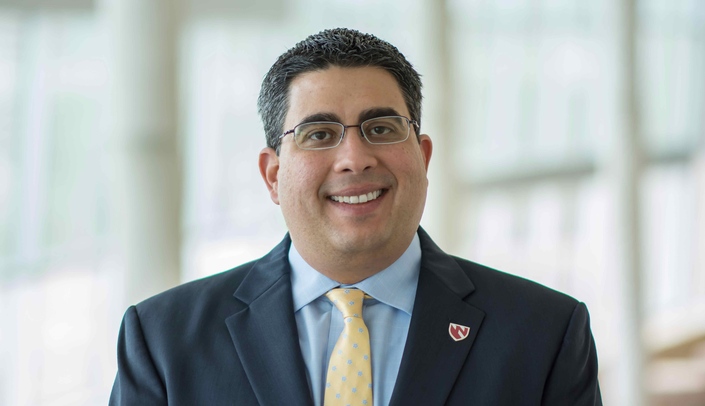It’s a debilitating disorder that causes people to feel like they are going to fall down when they are standing.
It’s called primary orthostatic tremor (OT), and this week the University of Nebraska Medical Center will be conducting the largest international study on the rare movement disorder with nearly 90 OT patients coming to Omaha from around the world.
"It’s a very rare condition, so it’s quite an achievement to get so many patients to congregate in Omaha," said Diego Torres-Russotto, M.D., a movement disorders specialist at UNMC. "OT is a miserable disease."
Dr. Torres-Russotto, who is an associate professor in neurological sciences, said patients will be coming from Europe, Canada, Australia and from throughout the United States.
Patients will be in Omaha all week with clinic time each day to allow patients to be analyzed by a team of health experts. On Wednesday, the Orthostatic Tremor Research Symposium will be held in the Fred & Pamela Buffett Cancer Center from 12:30 p.m. to 5:15 p.m.
This marks the third time Omaha has hosted the event, with the previous Omaha meetings held in 2012 and 2014.
Dr. Torres-Russotto said the OT patients will be able to interact with health professionals from three UNMC colleges – medicine, public health, and allied health professions – as well as from the Biomechanics Lab at the University of Nebraska at Omaha.
He said OT patients will undergo "a complex protocol" of 12 different procedures in clinic. These include:
· a functional magnetic resonance imaging (MRI) exam;
· an electromyogram (EMG), a test used to record the electrical activity of muscles;
· a virtual reality exam;
· a biomechanical exam; and
· several tests that record brain and eye activity.
OT is characterized by high frequency tremors of the legs when in a standing position and an immediate sense of instability. Because of the speed of the contractions, OT is often not recognized as a tremor when compared to essential tremor or Parkinson’s disease.
Dr. Torres-Russotto said OT is greatly underdiagnosed and often misdiagnosed as other neurological problems such as Parkinson’s, essential tremor or psychogenic problems.
"People with OT do not typically complain of tremors," he said. "Their biggest problem is the sudden disabling event that occurs when they stand. They feel unsteadiness and imbalance while standing. They can only stand for a short period of time, in some cases only seconds.
"There might be a feeling of panic. They need to sit down or start walking to relieve their symptoms."
OT is a repeating cycle that happens all through the day, he said. It is life-changing and unrelenting.
"It is an incapacitating disorder," Dr. Torres-Russotto said. "It impacts your life in just about every way imaginable and makes routine tasks such as going to church, standing in line at the grocery checkout, even going to the bathroom a major challenge."
Some other facts about OT include:
· It is more common in females.
· There’s usually a 10-15 year lag between onset of symptoms and diagnosis.
· Onset typically occurs around age 40.
· It won’t kill you, but it typically gets worse over time.
· Diagnosis is confirmed through the EMG test.
· By touching something, the feeling of falling improves.
For more information on OT, go to http://www.orthostatictremor.org/.
We are Nebraska Medicine and UNMC. Our mission is to lead the world in transforming lives to create a healthy future for all individuals and communities through premier educational programs, innovative research and extraordinary patient care.
